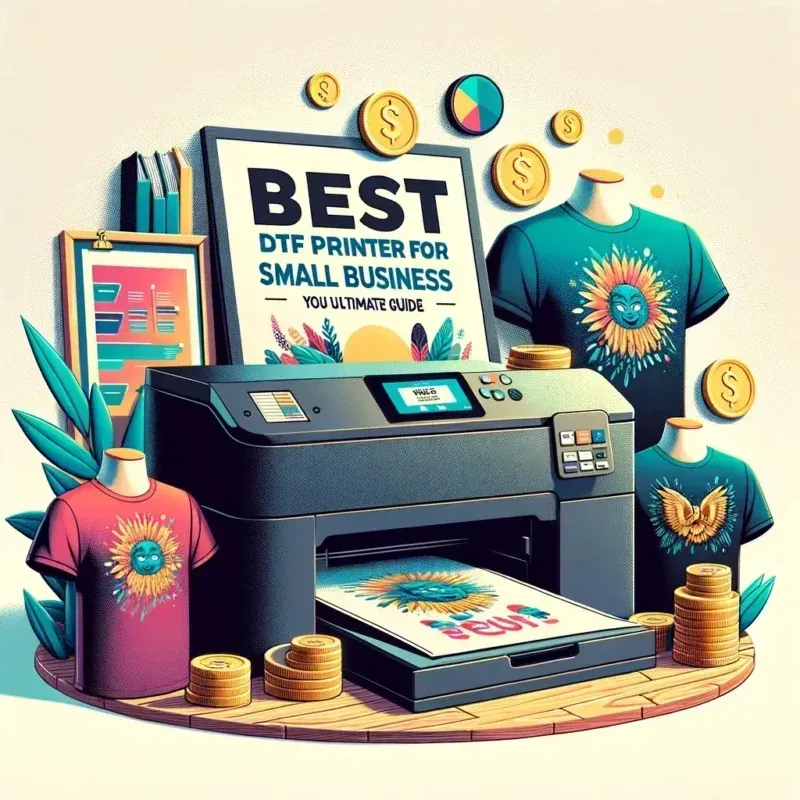DTF printing for small businesses has become a game-changer in the world of custom apparel, providing entrepreneurs with an innovative way to deliver unique products. This advanced printing technology not only offers vibrant designs but also caters to the growing demand for eco-friendly printing options. As small businesses increasingly seek cost-effective printing solutions, DTF becomes a viable choice, allowing them to compete effectively in niche markets. By harnessing this technique, business owners can unlock a multitude of customization opportunities while keeping production costs manageable. In this blog post, we will delve into the benefits and challenges of DTF printing, equipping small business owners with the necessary insights to thrive in today’s dynamic marketplace.
The rise of Direct-to-Film printing technology represents a notable shift for small-scale printing ventures, delivering high-quality results with remarkable efficiency. This innovative process has captured the attention of small business printing enthusiasts who are eager to enhance their product offerings with customized apparel. Offering a budget-friendly alternative, DTF is an intelligent choice for entrepreneurs looking to elevate brand presence while embracing sustainable practices. With the ability to create intricate designs, this printing method has become increasingly accessible to those in various industries, democratizing the world of customizations. Join us as we explore the transformative impact of this progressive printing technique on small enterprises.
What is DTF Printing and Why It Matters for Small Businesses
Direct-to-Film (DTF) printing represents a cutting-edge technology that allows small businesses to produce custom designs on a variety of fabrics with impressive results. This printing method utilizes a unique transfer film that enables bright, vibrant colors and intricate details, making it an ideal solution for custom apparel creation. DTF printing is particularly significant for small businesses as it empowers them to offer personalized products swiftly, catering to the individual preferences of customers without the need for large inventories.
The technology behind DTF printing involves printing designs onto a special film, which is then transferred onto garments using heat. This process not only ensures durability and flexibility in the printed designs but also accommodates different fabric types, making it a versatile option. For small businesses aiming to stand out in a saturated market, adopting DTF printing can bridge the gap between high-quality production and affordability, unlocking new avenues for revenue growth.
Eco-Friendly Practices in DTF Printing
As sustainability continues to dominate consumer preferences, eco-friendly printing practices have become an essential consideration for small businesses. DTF printing stands out as a viable option in this regard, as many of the inks used are water-based, reducing harmful chemical usage when compared to traditional methods. This eco-conscious approach not only helps in reducing environmental footprints but also appeals to the growing demographic of environmentally-aware consumers, enhancing brand loyalty in the process.
Moreover, by adopting a sustainable printing process, small businesses can market themselves as responsible and mindful of their ecological impact. This positioning resonates particularly well with younger consumers who prioritize sustainability in their purchasing decisions. By combining DTF printing with eco-friendly materials, businesses can promote custom apparel that meets both aesthetic and ethical standards, ultimately leading to greater customer satisfaction and potential for increased sales.
Benefits of Cost-Effective DTF Printing
Cost-effectiveness is one of the most appealing benefits of DTF printing for small businesses. The initial investment in DTF equipment is substantially lower compared to more complex methods like Direct-to-Garment (DTG) printing or traditional screen printing. The affordability of essential supplies such as transfer films and special inks allows small business owners to maintain healthy profit margins while experimenting with various custom apparel designs.
This cost efficiency is particularly crucial for startups and small business owners operating on limited budgets. With reduced upfront costs and the ability to cater to smaller run orders, businesses can quickly adapt to market demands. This adaptability can lead to higher revenue outcomes, as they can explore niche markets and capitalize on trends without the financial risks typically associated with larger-scale production.
Navigating Challenges with DTF Printing
While DTF printing offers numerous benefits, small businesses may encounter several challenges when integrating new printing technology into their operations. One major hurdle is the learning curve associated with operating DTF printers effectively. Issues such as printer calibration, maintenance, and the technical know-how required for running the equipment can pose significant barriers for entrepreneurs unfamiliar with digital printing systems.
Additionally, supply chain challenges can arise, especially if a business relies heavily on specific materials or inks required for DTF printing. Ensuring print durability and washability is another concern that must be addressed to maintain customer trust and satisfaction. By investing in proper training and developing a reliable supply chain, small businesses can overcome these challenges, maximizing the potential of DTF technology.
Personalization and Market Trends in DTF Printing
In the realm of custom apparel, personalization is increasingly becoming a key differentiator for small businesses looking to capture consumer interest. DTF printing technology facilitates this demand for unique, tailored products, allowing smaller operations to offer a wide variety of custom designs efficiently. As trends shift towards individual expression, businesses that capitalize on DTF printing can engage customers and encourage repeat business through innovative and personalized offerings.
Emerging market trends point towards a growing preference for individualized products and experiences. Small businesses leveraging DTF printing can adapt to this shift, creating apparel that caters to unique tastes and occasions. This trend not only enhances customer loyalty but also positions businesses well to capitalize on larger, emerging markets, setting the stage for sustained growth as the demands of modern consumers evolve.
The Future of DTF Printing in Small Business
Looking ahead, the future of DTF printing is promising for small businesses eager to innovate and expand their product offerings. With the continuous advancements in printing technology, businesses can expect even greater efficiency, speed, and quality in their output. The integration of advanced inks and materials will likely lead to even more opportunities for customization, enhancing the overall appeal of custom apparel.
As DTF printing technologies evolve, small businesses that remain agile and willing to adapt will find themselves at the forefront of industry trends. Keeping an eye on emerging technologies and market demands will empower entrepreneurs to not only meet consumer expectations but to exceed them, ultimately leading to growth in an increasingly competitive landscape. For those who embrace the innovative potential of DTF printing, the future indeed looks bright.
Frequently Asked Questions
What makes DTF printing for small businesses a cost-effective option?
DTF printing for small businesses is highly cost-effective due to its lower initial startup costs compared to other printing methods like Direct-to-Garment (DTG) or traditional screen printing. The materials needed, such as transfer films and inks, are affordable, allowing small business owners to maintain healthy profit margins even with small-run projects.
How can small businesses utilize DTF printing for custom apparel?
Small businesses can leverage DTF printing for custom apparel by creating vibrant and intricate designs that cater to specific customer preferences. This printing technology allows for quick turnarounds and minimal setup times, making it ideal for fulfilling unique, personalized orders that can enhance customer satisfaction and drive sales.
Is DTF printing eco-friendly for small business printing needs?
Yes, DTF printing is considered eco-friendly as it often uses water-based inks and produces fewer harmful emissions compared to traditional printing methods. This aligns with the growing consumer demand for sustainable products, making it a beneficial choice for small businesses aiming to enhance their brand image in an eco-conscious market.
What are the main challenges for small businesses adopting DTF printing technology?
Small businesses adopting DTF printing technology may face challenges such as a learning curve in operating equipment, maintenance issues, and ensuring that prints are durable and washable. Educating staff on proper usage and troubleshooting can help mitigate these challenges and ensure successful implementation.
What future trends should small businesses watch in DTF printing technology?
Future trends in DTF printing technology that small businesses should watch include advancements in printing speeds and ink formulations as well as a growing demand for personalization. Customization will continue to be a key factor, as consumers seek unique products tailored to their tastes, making DTF an appealing option for small businesses.
How does DTF printing compare with other printing methods for small businesses?
DTF printing stands out from other methods like Direct-to-Garment (DTG) and screen printing due to its cost-effectiveness, ease of use, and capability to produce high-quality designs with minimal setup. This makes DTF printing particularly suitable for small business printing needs that require flexibility and efficiency in producing custom apparel.
| Key Point | Details |
|---|---|
| Introduction | DTF printing is revolutionizing the apparel sector for small businesses, allowing for customization and creativity. |
| Growing Popularity | Rapid growth in DTF printing adoption due to cost-effectiveness and ease of use, especially for small runs. |
| Cost-Effectiveness | Lower initial startup costs compared to DTG and screen printing, promoting better profit margins. |
| Sustainability | DTF printing uses water-based inks, which are more environmentally friendly and enhance brand image. |
| Challenges | Gradual learning curve for equipment use, maintenance, and ensuring quality output are potential hurdles. |
| Future Trends | Expectations for growth with advancements in technology and increased demand for personalized products. |
Summary
DTF printing for small businesses offers a transformative solution for entrepreneurs in the competitive apparel market. This innovative method not only provides cost-effective and high-quality printing options but also aligns well with the growing consumer demand for personalized and sustainable products. By utilizing DTF printing, businesses can tap into unique designs and customization capabilities that set them apart from larger competitors. However, small business owners must remain aware of the challenges that come with new technology and invest in proper training and equipment maintenance. Overall, DTF printing represents a significant opportunity for small businesses to enhance their offerings and engage customers more effectively, paving the way for future growth and success.



